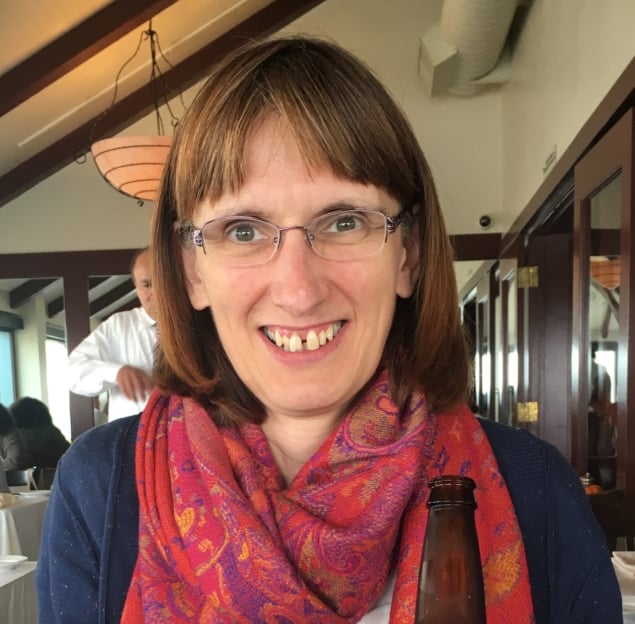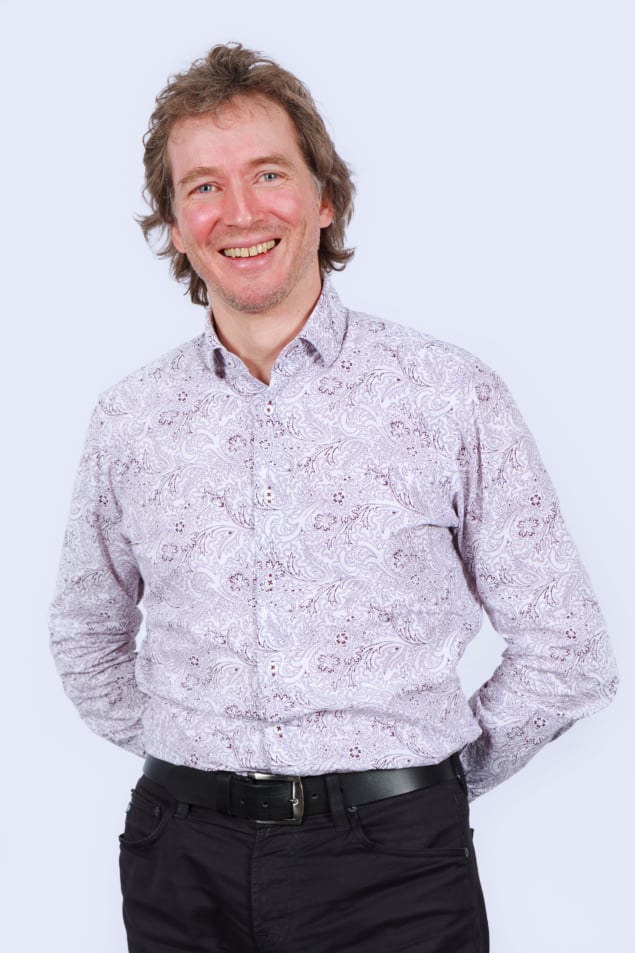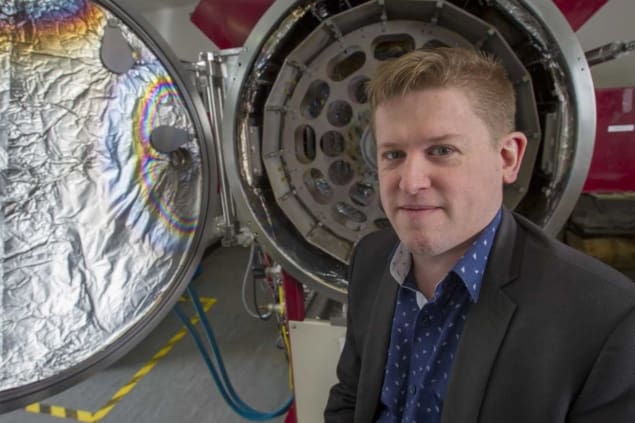
Scientists, by and large, are more than happy to turn money, whether from government funders or industrial sponsors, into research output. Flip that around, though, and it’s clear that many researchers, and not just those working in academia, are way outside their comfort zone when it comes to transforming scientific breakthroughs into commercial innovation and cold, hard cash.
One of the blockers is the uneasy fault-line between science and commerce, not least the often byzantine world of intellectual property (IP) law. Patents are a case in point. The lifeblood of research impact and commercialization, patents give scientists and their employers legal protection of their invention – effectively the right to take legal action against would-be competitors who make, use or sell an invention without permission over the lifetime of a patent (typically 20 years).
Trouble is, the patenting process and research commercialization rarely follow a linear path from A to B. Here Physics World talks to an academic research manager, an IP professional and a technology entrepreneur about what works well – and what doesn’t – when taking science out of the lab and into the marketplace.
The research collaboration
Anne Moore is project manager of Proteus, a UK-based interdisciplinary research collaboration (IRC) that’s pioneering photonics-based technologies to diagnose and manage lung diseases in the intensive-care environment.

Proteus is backed by the UK’s Engineering and Physical Sciences Research Council (EPSRC), a government funding body, to the tune of £9.5m. Three consortium universities – Heriot Watt, Bath and Edinburgh – contribute a further £2m in support.
For Moore, who’s based at the University of Edinburgh, the strength of the IRC model lies in its fusion of research capabilities and domain knowledge across a range of disciplines. “It’s all about team science,” she explains. “Integration is everything – there’s nothing like sharing the same space.”
In the case of Proteus, “team science” means 16 postdoctoral researchers and 24 PhD students spanning chemistry, fibre optics, imaging, signal processing, machine learning and front-line clinical care – all with a shared objective to develop, translate and ultimately commercialize technologies for the rapid, accurate diagnosis of bacterial infection in the lungs.
This emphasis on team science, and specifically broader collaboration and colocation of experts across science, legal and business disciplines, is what really marks Proteus out. “It’s not them and us,” explains Moore. “Proteus is all about putting the scientists, engineers and business development people together.”
As a result, claims Moore, translation and commercialization of research are hard-wired into the IRC’s working model. “There are financial benefits for the IRC universities and the researchers in making sure technologies reach the marketplace,” she says. “Increasingly translation of the opportunities is expected by sponsors and government, while innovation and entrepreneurship form one of the key pillars of our strategic plan here at the University of Edinburgh.”
In fact, Proteus is setting itself up to be a case study in how to patent research breakthroughs in a university setting. “It’s important to dream big: assume your IP is the next big thing,” says Moore. “Across the collaboration we have already filed 12 patent applications, and more are in the pipeline.”
With this in mind, disclosure and assessment of Proteus inventions are handled in-house, and for the benefit of the entire consortium, by Edinburgh Innovations (the innovation management service of the University of Edinburgh), while filing and prosecuting of patent applications are outsourced to Marks & Clerk, a specialist IP legal services firm.
As the Proteus project manager, Moore’s “integration is everything” mindset is crucial in managing the sensitive trade-offs around best-practice IP strategies in an academic research context – for example, the balancing act around research collaboration versus management control; the tensions between academic publication versus patenting; and the relative emphasis on blue-skies research versus translational research.
The bottom line: “It’s never too early to start thinking about IP,” advises Moore. “IP can appear in unexpected places – you can’t take back a disclosure.”
The established manufacturer
Dominic Ashmole is an innovation and IP analyst at Canon Medical Research Europe, the Edinburgh-based subsidiary of Canon Medical Systems, an international manufacturer of diagnostic medical imaging systems spanning CT, MR, X-ray and ultrasound technologies.

Canon Medical Research Europe traces its origins to the mid-1990s and a University of Edinburgh imaging software spin-out called Voxar, which was subsequently acquired by Barco (2004) and Toshiba (2008) before ending up as part of the Canon group earlier this year.
Ashmole, who’s been an ever-present since the Voxar days, says the 120-strong staff team at the company – comprising software engineers, research scientists, clinical specialists and verification engineers – boasts an impressive track-record of innovation in medical visualization software, evidenced by a portfolio of 70+ granted patents in the past 20 years.
“Working on patents together with our scientists and engineers over the years, we’ve been surprised by many things,” he explains. “For starters, the vast majority of our patents are from a mere handful of inventors. Once they succeed, however, these inventors persist in succeeding. Unfortunately, the bug does not seem to be terribly infectious.”
There’s also what Ashmole calls the “strategy shmatergy” conundrum. “There’s always grand talk about patent strategies [in IP circles], but our reality has seemed more messy than that. Basically, the task is to keep trying things to motivate and enable employees to propose ideas for patents. Then keep navigating the internal and external hoops to get those ideas filed and granted.”
He continues: “To be honest, I’ve never heard of one of our patents being infringed or generating licence revenue. But sometimes large companies don’t sweat the details, instead focusing on building up an overall ‘war chest’ of hundreds or thousands of patents that they can they can cross-licence in bulk with their competitors.”
As a more general advisory, says Ashmole, it’s also worth noting that many, if not most, patents are granted for incremental improvements. “We can’t all invent the lightbulb or the CT or MRI scanner. Consider the maturity of your technical field and don’t self-censor your patent potential.”
Conversely, by the time they are granted, many patents have become so narrow that their only value for big manufacturers is as part of a broader “smokescreen” – essentially a distraction or false trail for competitor companies to follow. “More than half of our patented ideas have not made it into a product,” Ashmole explains, “while many of our product ideas are not patented.”
Ultimately, says Ashmole, patents are sufficiently time-consuming and difficult to read that they are often misunderstood and over-estimated. “Beware the ‘empty shell’, when meagre claims protect little of the grandiose description. It’s all in the claims, and the description and figures may entirely mislead the unwary and hasty.”
The early-stage start-up
Dave Hughes is co-founder and chief technical officer at novosound, a Scottish start-up that’s developed a fully additive thin-film fabrication technique for the volume manufacture of printable ultrasound sensors. Those sensors are being lined up for diverse non-destructive-testing applications spanning oil and gas, industrial process control and medical imaging – target markets that collectively run to billions of pounds each year.

Novosound is the first spin-out to emerge from the University of the West of Scotland and back in April closed a seed investment round with £1.5m in funding.
That investment, claims Hughes, is a bet on novosound’s differentiation, along a number of coordinates, versus traditional ultrasound sensor technologies – for example, multipoint devices that work above 250 °C (current ceramic sensors cease to be piezoelectric above around 160 °C); thin-film sensors that offer consistent sub-mm resolution; and printed sensor materials compatible with the complex geometries required in many industrial end-use cases.
Technical innovation notwithstanding, Hughes and colleagues are also majoring on a robust IP strategy. This year, for example, novosound secured a UK patent for its ultrasound sensors in various imaging and measurement contexts, while formal patent protections are in progress for core material science and manufacturing, as well as a fully printed, flexible and high-resolution imaging array for ultrasound applications.
Hughes says the focus on IP is mandatory for would-be entrepreneurs: “The best bit of advice that I got when thinking about commercializing was to ‘stop publishing everything’ and to really assess what was protectable – taking into account the application and market as well as the novelty of the technology and science. Once the IP is protected, there is plenty of time to publish academic findings in a safe manner [versus the commercial potential].”
The university technology-transfer office (TTO) is an invaluable resource in this regard, providing information about previous IP that has (or has not) been protected from the university as well as links to commercial contacts and funding opportunities.
For Hughes, the TTO was instrumental in supporting his start-up funding application to Scottish Enterprise, enabling him to recruit a “commercial champion” – a technology entrepreneur called Richard Cooper, who subsequently became the co-founder and CEO of novosound.
Now that the company is up and running, Hughes and Cooper must keep a constant eye on IP issues to remain on top of any developments inside novosound and further afield. “To achieve this, we have a culture of IP protectionism, whereby every member of the team is on high alert for new IP so that it can be documented and protected – formally if needed. We also use a third-party consultant with a long history of expertise in managing an IP strategy for exploitation.”
Elsewhere, says Hughes, there’s plenty of value to be had from the trial-and-error approaches that typify many start-up operations. “Negative IP affords an opportunity to protect your failures as well as your successes. There is immense value in the knowledge a team builds from things that don’t work.”
- This article is based on presentations given at the Institute of Physics (IOP) workshop “Journeys in Intellectual Property: Perspectives from Physics and Technology” in Edinburgh, UK. More information on IOP events in 2019 can be found here.



